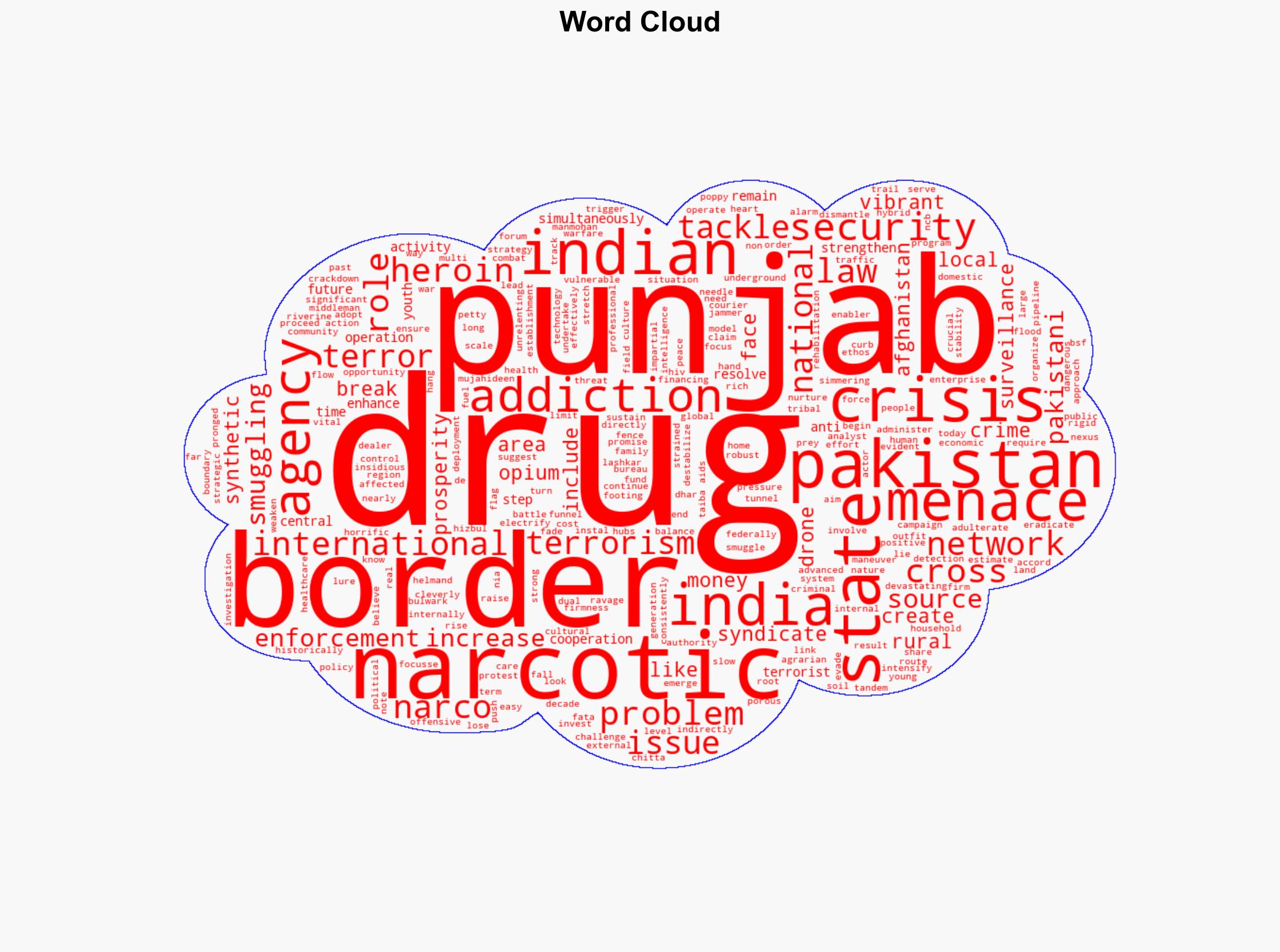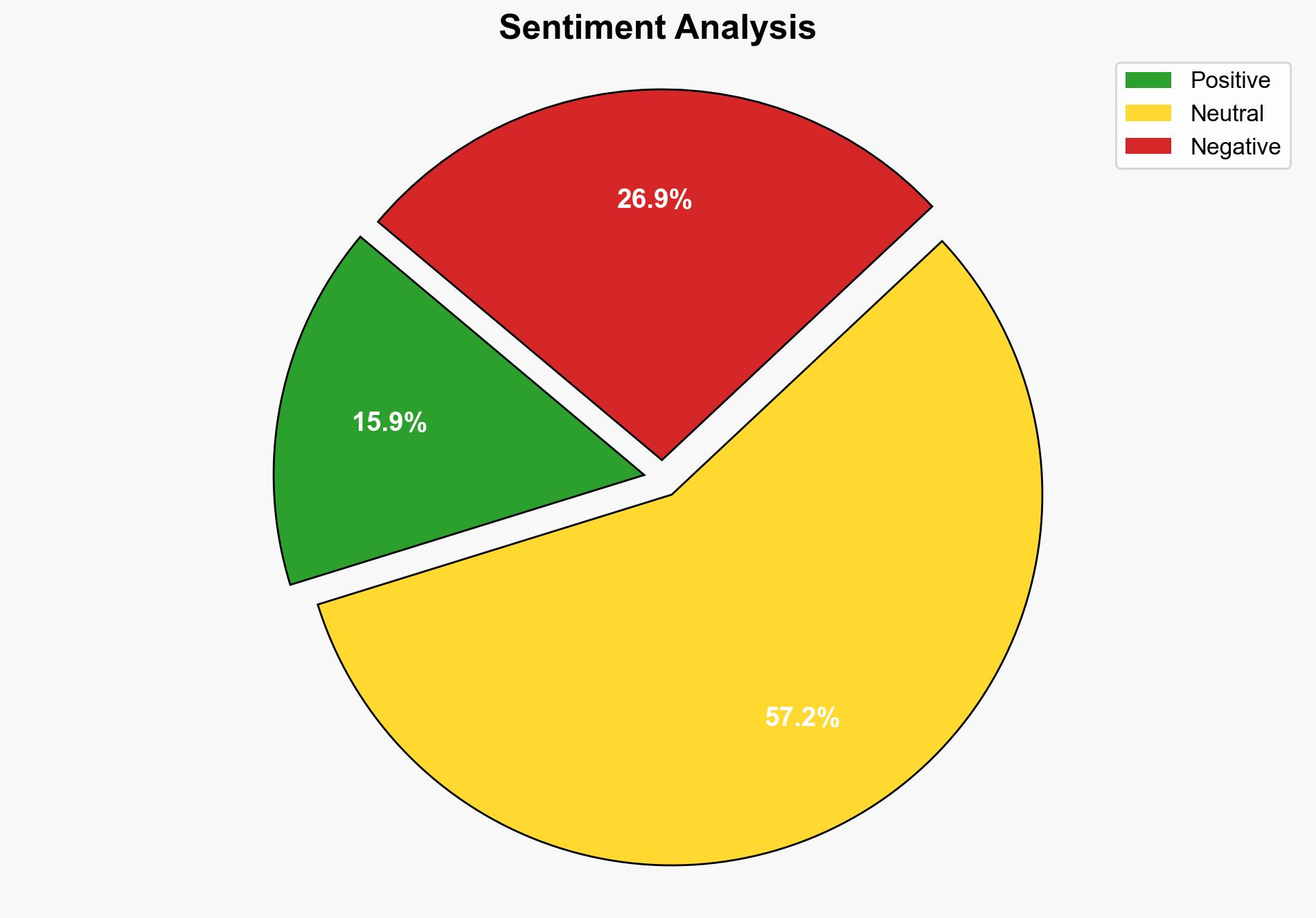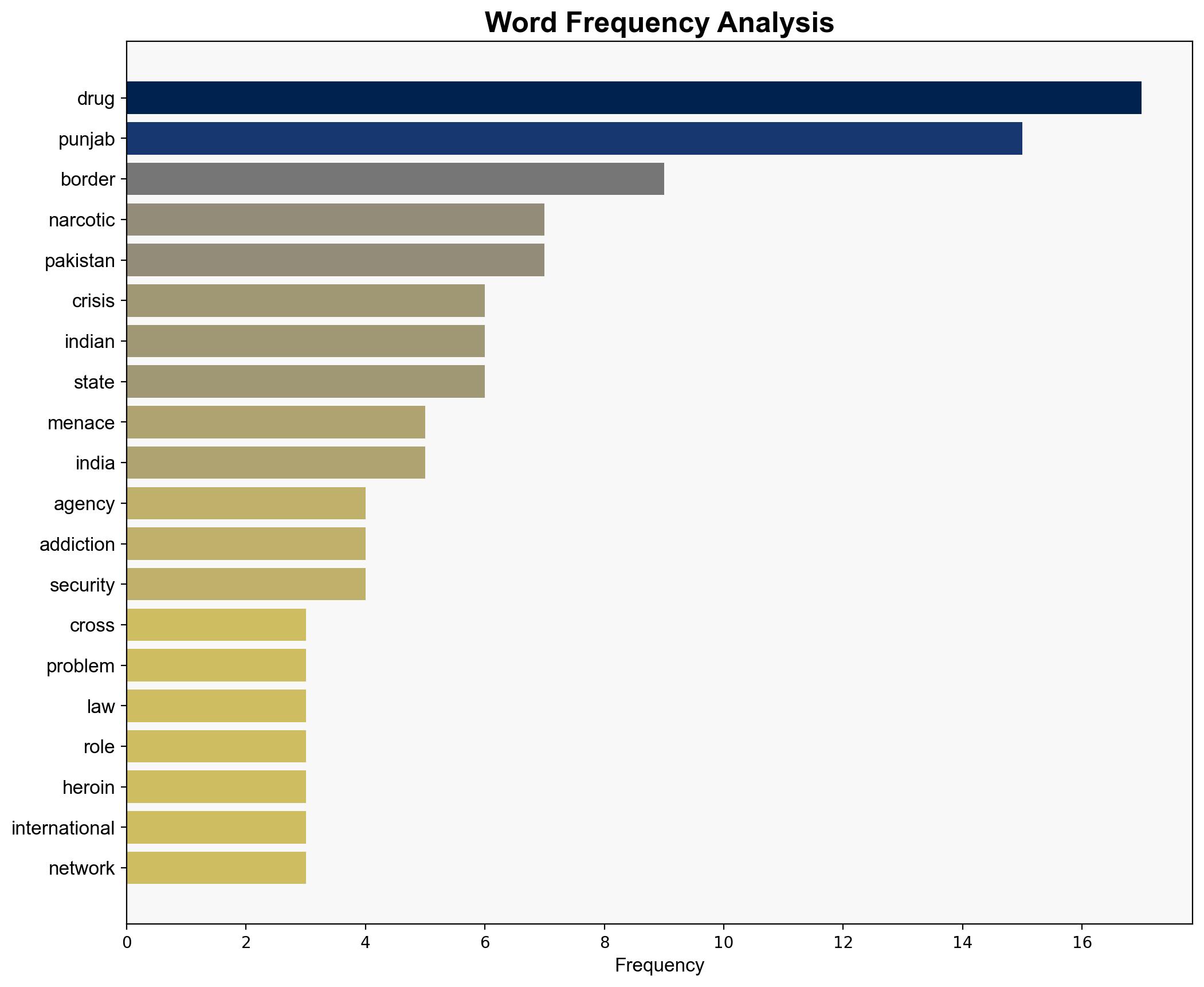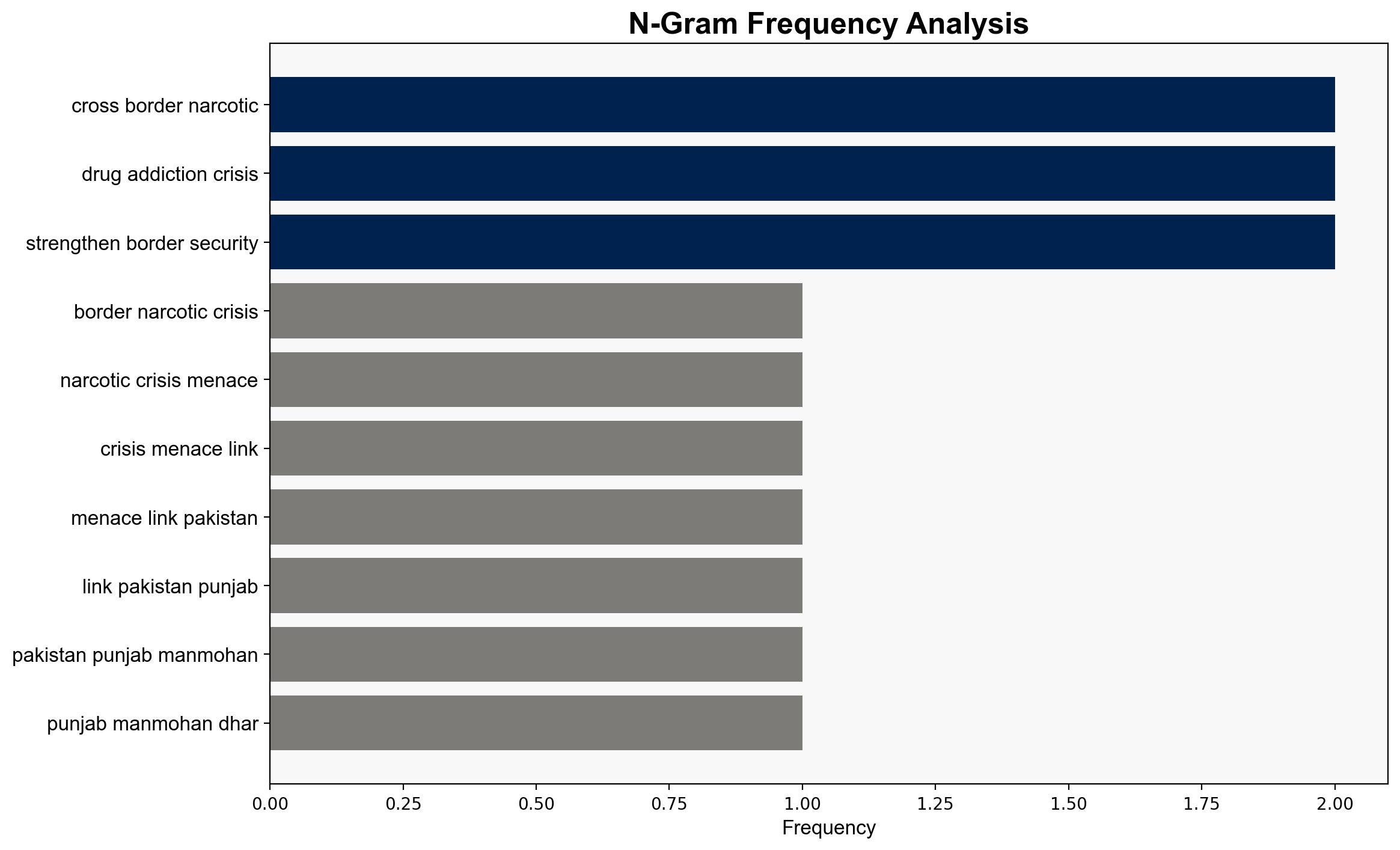Cross-Border Narcotics Crisis The Menace Linking Pakistan and Punjab – Statetimes.in
Published on: 2025-06-12
Intelligence Report: Cross-Border Narcotics Crisis The Menace Linking Pakistan and Punjab – Statetimes.in
1. BLUF (Bottom Line Up Front)
The cross-border narcotics crisis between Pakistan and Punjab represents a significant threat to regional stability and national security. The crisis is fueled by organized drug syndicates, supported by state and non-state actors in Pakistan, exploiting the porous border to smuggle heroin, opium, and synthetic drugs into Indian Punjab. This has led to widespread addiction, crime, and health issues, severely impacting the socio-economic fabric of Punjab. Immediate, coordinated action is required to address this issue through enhanced border security, international cooperation, and comprehensive de-addiction programs.
2. Detailed Analysis
The following structured analytic techniques have been applied to ensure methodological consistency:
Causal Layered Analysis (CLA)
At the surface level, the crisis manifests as increased drug addiction and related crimes in Punjab. Systemically, weak border controls and economic vulnerabilities in rural areas facilitate drug trafficking. The worldview is shaped by the perception of Pakistan’s strategic use of narcotics to destabilize India. Myths include the belief in the inevitability of drug smuggling due to geographical and socio-political factors.
Cross-Impact Simulation
The narcotics crisis exacerbates tensions between India and Pakistan, potentially impacting bilateral relations and regional security. Economic dependencies on illicit drug trade could destabilize local economies in Punjab, further entrenching the crisis.
Scenario Generation
Best Case: Strengthened border security and international cooperation significantly reduce drug trafficking, leading to a decline in addiction rates.
Worst Case: Continued smuggling and ineffective interventions result in escalating addiction, crime, and regional instability.
Most Likely: Incremental improvements in security and rehabilitation efforts yield moderate reductions in drug-related issues.
Network Influence Mapping
Key actors include drug syndicates, local couriers, and middlemen. Influence extends to political figures and law enforcement, with potential corruption undermining anti-drug efforts.
3. Implications and Strategic Risks
The narcotics crisis poses a multi-dimensional threat, affecting political stability, public health, and economic development in Punjab. The potential for narco-terrorism increases the risk of cross-domain threats, including funding for terrorist activities. Systemic vulnerabilities in border security and law enforcement exacerbate these risks.
4. Recommendations and Outlook
- Enhance border security with advanced surveillance technology and increased personnel deployment.
- Strengthen international cooperation with anti-drug agencies to disrupt cross-border drug networks.
- Invest in de-addiction and rehabilitation programs, focusing on rural youth in Punjab.
- Ensure impartial and professional law enforcement to effectively combat drug syndicates.
- Continue diplomatic efforts to hold Pakistan accountable for its role in the crisis at global forums.
5. Key Individuals and Entities
Manmohan Dhar
6. Thematic Tags
national security threats, counter-terrorism, regional focus





